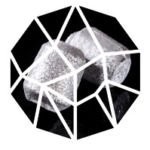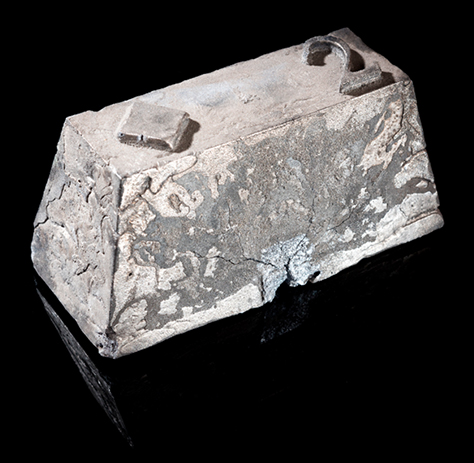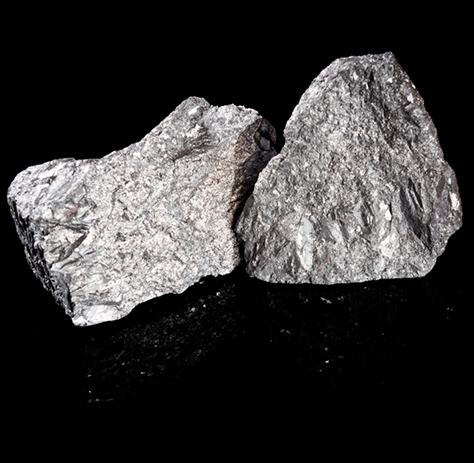Foundry Products
We produce numerous varieties of foundry products.
All of these are ferrosilicon-based and are special elements that give specific metallurgical properties to products they are used in.
- 30% of the production is used to manufacture water supply, oil and gas pipelines
- 70% is used in applications where strength and formability are required (i.e., automotive components)
What are nodularisers?
The process of nodularisation aims to improve the mechanical properties of cast iron by ensuring the formation of graphite in the spheroidal or compacted form. These nodularisers are added in liquid cast iron to promote the formation of spheroidal graphite.
Nodularisers are ferrosilicon alloys containing magnesium with, when needed, rare-earth elements:
- Magnesium is the principal element in FeSiMg alloys responsible for creating the necessary conditions for the graphite phase to grow from the liquid into the required spheroidal form.
- Our range of FeSiMg alloys is designed to meet the requirements of most of the magnesium treatment processes currently used in the production of ductile iron.
What about those three main components of FeSiMg alloys?
Magnesium is the principal element in FeSiMg alloys responsible for creating the necessary conditions for the graphite phase to grow from the liquid into the required spheroidal form. The level of magnesium can be selected from a range between 5% to 10%. Several choice factors include treatment method used, degree of acceptable reactivity and economy of addition rate.
Calcium is an element which retards the rate of reaction of magnesium with the liquid iron and thereby improves magnesium recovery and reduces the reaction violence. In excessive amounts, calcium can produce slag.
Rare-earth elements (Ce, La…) are required in order to counteract the deleterious effect of certain trace elements on the iron graphite shape, notably Pb, Sb, and Bi. The decision of whether to use a nodulariser containing rare earth elements is generally determined by the quality and consistency of the raw materials used as melt stock. An additional important benefit is the improvement in nodule count and reduction in fading effect. Where high purity charge materials are used, the presence of rare earth elements in the treatment alloy can be unnecessary and even detrimental (causing “chunky graphite” forms).
What are inoculants?
Inoculants are added in liquid cast iron in order to provide the best and consistent characteristics in the final casting. They are used to control matrix structure and avoid casting defects. Inoculants can be found under several grain size distributions to satisfy the location of the inoculant addition within the foundry process. Those locations of inoculant addition are known as in furnace, in ladle, in stream or in mould.
Inoculants are ferrosilicon based alloys. Ferroglobe products differ from each other and the foundryman, assisted by one of our technical expert, will make a selection depending of the chosen application and the foundry process in question. All elements which are aluminium, barium, bismuth, calcium, carbon, strontium, zirconium or rare earth can be added in the exact amount into the base liquid iron in order to provoke and certify the final casting matrix structure.
The addition of inoculants in liquid cast iron (grey and ductile irons) allows us to:
- Improve the homogeneity of the cast iron structure
- Eliminate the formation of carbides into thin parts or salient angles
- Direct the solidification towards the stable diagram, with graphite precipitation
- Refine the structure (higher cells count, finer grains in the microstructure)
- Improve mechanical properties
- Better separate slag and metal
- Decrease the tendency to dross formation
- Decrease thetendency to micro-shrinkage
- Decrease risk of gas formation
- Decrease risk of mould/metal interface defects
What are cored-wire alloys?
Cored wire is a delivery method long preferred in the steel industry in which the alloy is grounded to a fine size, encapsulated in a sheath of steel, roll-formed into a tube and then wound into a coil. The steel sheath protects the alloy from oxidation and its fine size aids in the integration of the alloy into the molten metal
This cored wire technology, or cored wire injection process, is an ingenious way of adding metallurgical treatment chemical elements in the centre of a liquid iron bath. This process requires the use of an injection device placed vertically or horizontally near the metallurgical treatment site.
This injection device will feed automatically, by considering the mass and the chemical composition of the treated liquid iron volume and the appropriated wire length needed to achieve the required metallurgical treatment.





